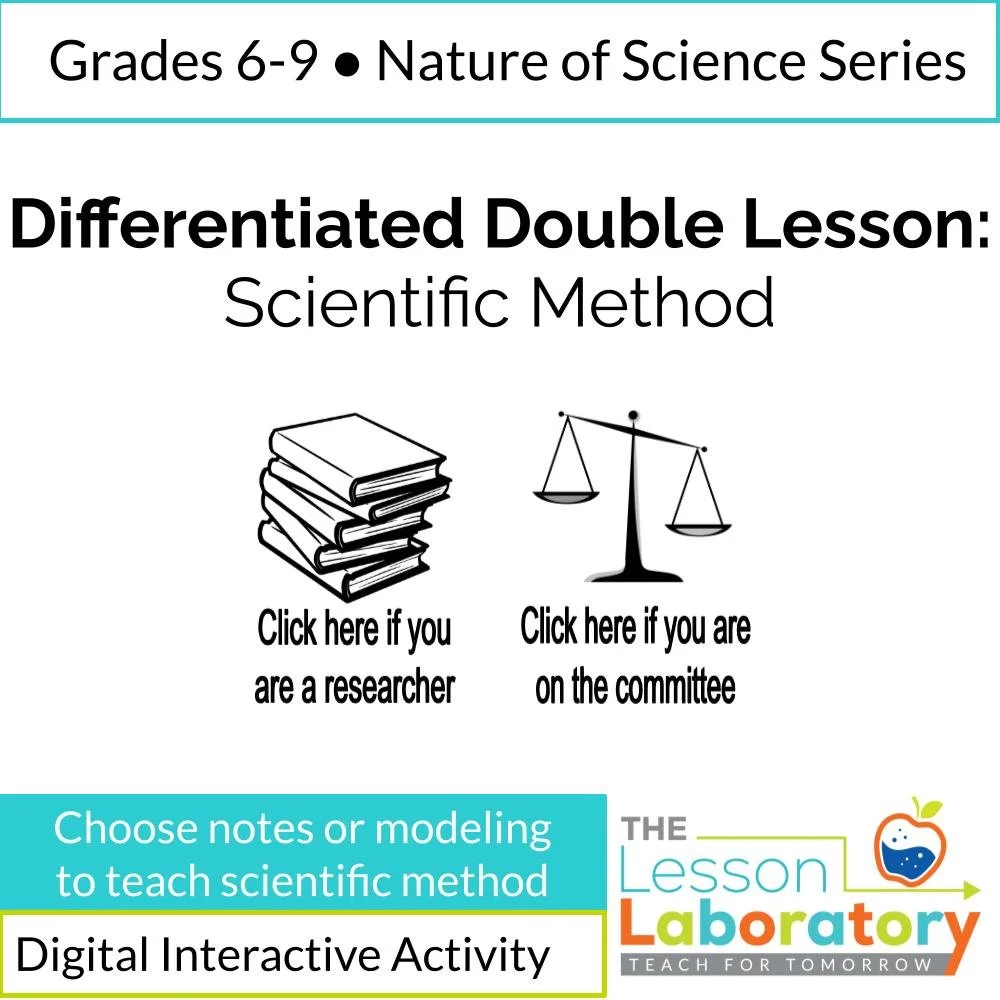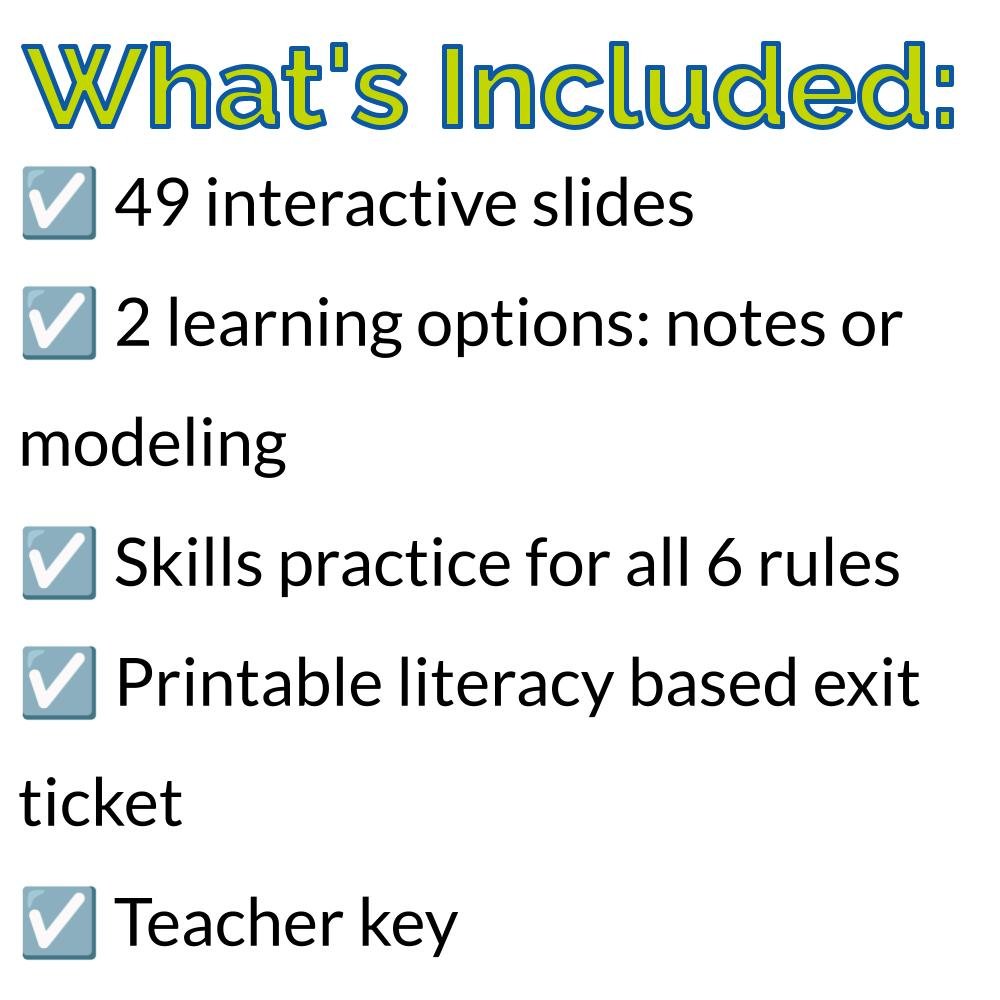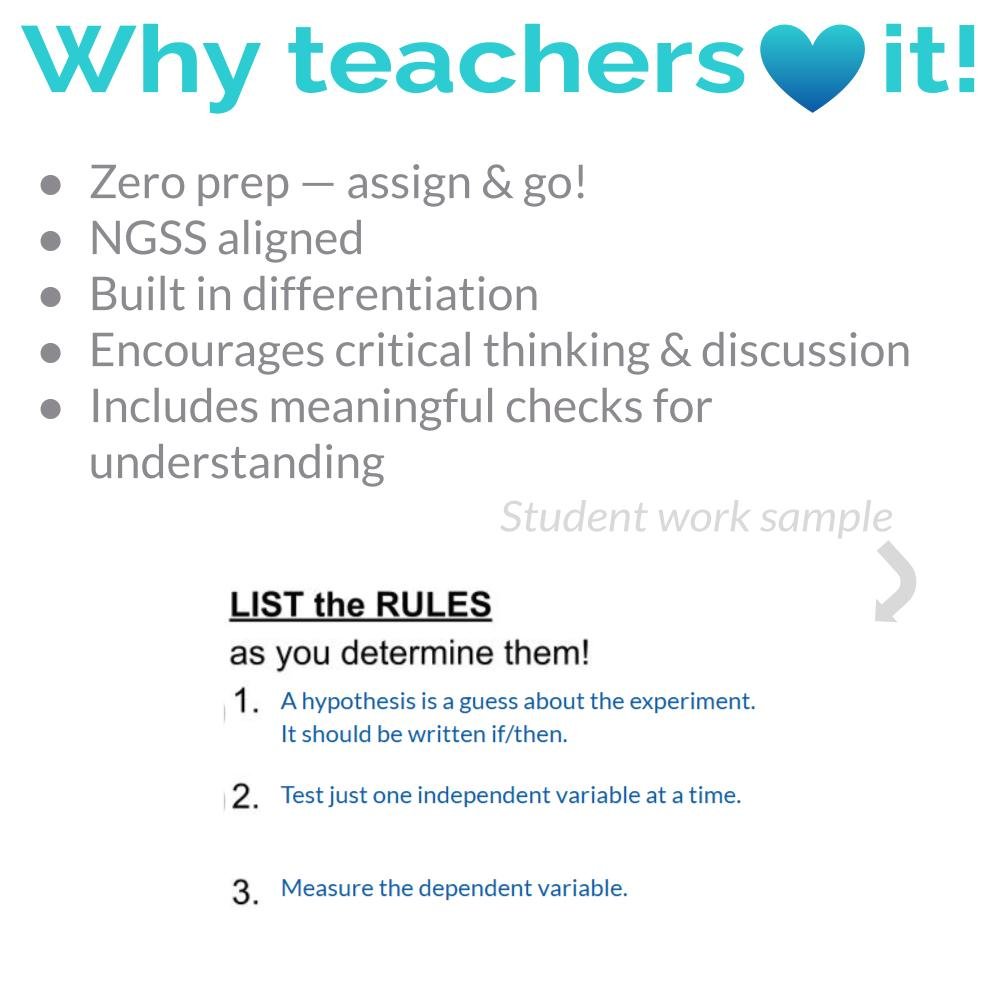



Scientific Method Digital Lesson | Differentiated Notes vs Modeling Instruction Investigation
Students learn the rules of the scientific method through notes or a funding-based modeling task.
In the dynamic landscape of the classroom, finding a balance between engagement and comprehension can be a true challenge. How often have you encountered a class divided between those lost in confusion and those bored by repetition? The solution lies in our innovative offering that ensures every student finds their path to understanding while staying captivated throughout the process.
Teaching Scientific Method: A Tale of Dual Instruction
Imagine a classroom where every student, regardless of their skill level, grasps the essence of scientific method with fervor. This aspiration led us to a groundbreaking approach. We designed a differentiated double lesson, expertly crafted using visually stunning, hyperlinked Google Slides. The result is an educational gem that will grace your classroom for years, reshaping the way you teach scientific method.
Why Choose Our Differentiated Double Lesson?
Holistic Engagement: Striking the balance between accessibility and challenge, our lesson caters to two groups within your class. Every student's learning style is acknowledged, ensuring no one is left behind.
Timeless Value: Investing in this product isn't just a purchase; it's an investment in your classroom's future. This versatile resource is designed to evolve with your teaching approach and cater to the diverse needs of your students.
Collaborative and Solo-Ready: Whether you have a co-teaching partner or are a solo teacher, this lesson seamlessly adapts. Either way, you'll effortlessly orchestrate a two-day lesson where both independent tasks and guided instruction find their place.
The Unveiling of the Lesson:
Researcher's Perspective: Half the class transforms into "researchers." They embark on a journey of discovery, uncovering six essential scientific method rules through visually captivating notes pages. This group takes the helm of their own understanding, paving the way for ownership of the topic.
Committee's Insight: The remaining students become the "committee." Immersed in different experimental designs, they evaluate researchers' proposals and decide who deserves the committee's coveted resources. Through this engaging process, they identify the same fundamental rules as the researchers, reinforcing their understanding through application.
Enriching Application and Practice:
With every discovered rule comes an opportunity for application. Practice sets for each rule ensure students not only understand the concept but can also wield it effectively.
Embrace the Future of Teaching:
Embrace a future where engagement and comprehension walk hand in hand. Empower every student to unravel the scientific method's intricacies with confidence and enthusiasm. Our differentiated double lesson is not just a teaching tool; it's a gateway to a classroom transformed. Secure your access now and embark on a journey where learning thrives and understanding prevails.
To preview this product, click here.
Grade & Course Recommendation:
Middle School: Ideal for Grades 6–8 during early scientific inquiry or lab-skills units.
High School: Excellent for Grade 9 Biology or Physical Science review at the beginning of the year.
Cross-Curricular Connections:
ELA Integration: Reinforces writing hypotheses, summarizing results, and supporting claims with evidence.
Math Integration: Students interpret data and calculate averages, percentages, or simple statistics.
STEM Integration: Emphasizes the shared scientific method across all STEM disciplines.
Daily slide + literacy - based exit ticket included with purchase
Join the Lesson Laboratory and Teach for Tomorrow!
NGSS (Next Generation Science Standards)
MS-ETS1-2: Evaluate competing design solutions using a systematic process to determine how well they meet the criteria and constraints of the problem. (connection: students assess experimental setups and determine valid tests of variables)
MS-ETS1-4: Develop a model to generate data for iterative testing and modification of a proposed object, tool, or process. (connection: students model the experimental process and refine hypotheses)
HS-LS1-3: Plan and conduct an investigation to provide evidence that feedback mechanisms maintain homeostasis. (connection: higher-level students apply the scientific method to authentic biological questions)
HS-ETS1-2: Design a solution to a complex real-world problem by breaking it down into smaller, more manageable problems that can be solved through engineering. (connection: evaluating and improving experimental design mirrors engineering optimization)
Science & Engineering Practices: Asking questions and defining problems; Planning and carrying out investigations; Analyzing and interpreting data; Constructing explanations.
Crosscutting Concepts: Cause and effect; Systems and system models; Patterns.
Common Core State Standards (ELA – Literacy in Science & Technical Subjects)
Middle & High School (Grades 6–12)
CCSS.ELA-LITERACY.RST.6-8.3 / RST.9-10.3: Follow precisely a multistep procedure when carrying out experiments, taking measurements, or performing technical tasks.
CCSS.ELA-LITERACY.RST.6-8.7 / RST.9-10.7: Integrate quantitative or technical information expressed in words with a version of that information expressed visually (e.g., in a table or graph).
CCSS.ELA-LITERACY.WHST.6-8.1 / WHST.9-10.1: Write arguments focused on discipline-specific content. (connection: forming and justifying hypotheses and conclusions)
CCSS.ELA-LITERACY.WHST.6-8.2 / WHST.9-10.2: Write informative/explanatory texts, including scientific analyses or experimental summaries.
Students learn the rules of the scientific method through notes or a funding-based modeling task.
In the dynamic landscape of the classroom, finding a balance between engagement and comprehension can be a true challenge. How often have you encountered a class divided between those lost in confusion and those bored by repetition? The solution lies in our innovative offering that ensures every student finds their path to understanding while staying captivated throughout the process.
Teaching Scientific Method: A Tale of Dual Instruction
Imagine a classroom where every student, regardless of their skill level, grasps the essence of scientific method with fervor. This aspiration led us to a groundbreaking approach. We designed a differentiated double lesson, expertly crafted using visually stunning, hyperlinked Google Slides. The result is an educational gem that will grace your classroom for years, reshaping the way you teach scientific method.
Why Choose Our Differentiated Double Lesson?
Holistic Engagement: Striking the balance between accessibility and challenge, our lesson caters to two groups within your class. Every student's learning style is acknowledged, ensuring no one is left behind.
Timeless Value: Investing in this product isn't just a purchase; it's an investment in your classroom's future. This versatile resource is designed to evolve with your teaching approach and cater to the diverse needs of your students.
Collaborative and Solo-Ready: Whether you have a co-teaching partner or are a solo teacher, this lesson seamlessly adapts. Either way, you'll effortlessly orchestrate a two-day lesson where both independent tasks and guided instruction find their place.
The Unveiling of the Lesson:
Researcher's Perspective: Half the class transforms into "researchers." They embark on a journey of discovery, uncovering six essential scientific method rules through visually captivating notes pages. This group takes the helm of their own understanding, paving the way for ownership of the topic.
Committee's Insight: The remaining students become the "committee." Immersed in different experimental designs, they evaluate researchers' proposals and decide who deserves the committee's coveted resources. Through this engaging process, they identify the same fundamental rules as the researchers, reinforcing their understanding through application.
Enriching Application and Practice:
With every discovered rule comes an opportunity for application. Practice sets for each rule ensure students not only understand the concept but can also wield it effectively.
Embrace the Future of Teaching:
Embrace a future where engagement and comprehension walk hand in hand. Empower every student to unravel the scientific method's intricacies with confidence and enthusiasm. Our differentiated double lesson is not just a teaching tool; it's a gateway to a classroom transformed. Secure your access now and embark on a journey where learning thrives and understanding prevails.
To preview this product, click here.
Grade & Course Recommendation:
Middle School: Ideal for Grades 6–8 during early scientific inquiry or lab-skills units.
High School: Excellent for Grade 9 Biology or Physical Science review at the beginning of the year.
Cross-Curricular Connections:
ELA Integration: Reinforces writing hypotheses, summarizing results, and supporting claims with evidence.
Math Integration: Students interpret data and calculate averages, percentages, or simple statistics.
STEM Integration: Emphasizes the shared scientific method across all STEM disciplines.
Daily slide + literacy - based exit ticket included with purchase
Join the Lesson Laboratory and Teach for Tomorrow!
NGSS (Next Generation Science Standards)
MS-ETS1-2: Evaluate competing design solutions using a systematic process to determine how well they meet the criteria and constraints of the problem. (connection: students assess experimental setups and determine valid tests of variables)
MS-ETS1-4: Develop a model to generate data for iterative testing and modification of a proposed object, tool, or process. (connection: students model the experimental process and refine hypotheses)
HS-LS1-3: Plan and conduct an investigation to provide evidence that feedback mechanisms maintain homeostasis. (connection: higher-level students apply the scientific method to authentic biological questions)
HS-ETS1-2: Design a solution to a complex real-world problem by breaking it down into smaller, more manageable problems that can be solved through engineering. (connection: evaluating and improving experimental design mirrors engineering optimization)
Science & Engineering Practices: Asking questions and defining problems; Planning and carrying out investigations; Analyzing and interpreting data; Constructing explanations.
Crosscutting Concepts: Cause and effect; Systems and system models; Patterns.
Common Core State Standards (ELA – Literacy in Science & Technical Subjects)
Middle & High School (Grades 6–12)
CCSS.ELA-LITERACY.RST.6-8.3 / RST.9-10.3: Follow precisely a multistep procedure when carrying out experiments, taking measurements, or performing technical tasks.
CCSS.ELA-LITERACY.RST.6-8.7 / RST.9-10.7: Integrate quantitative or technical information expressed in words with a version of that information expressed visually (e.g., in a table or graph).
CCSS.ELA-LITERACY.WHST.6-8.1 / WHST.9-10.1: Write arguments focused on discipline-specific content. (connection: forming and justifying hypotheses and conclusions)
CCSS.ELA-LITERACY.WHST.6-8.2 / WHST.9-10.2: Write informative/explanatory texts, including scientific analyses or experimental summaries.